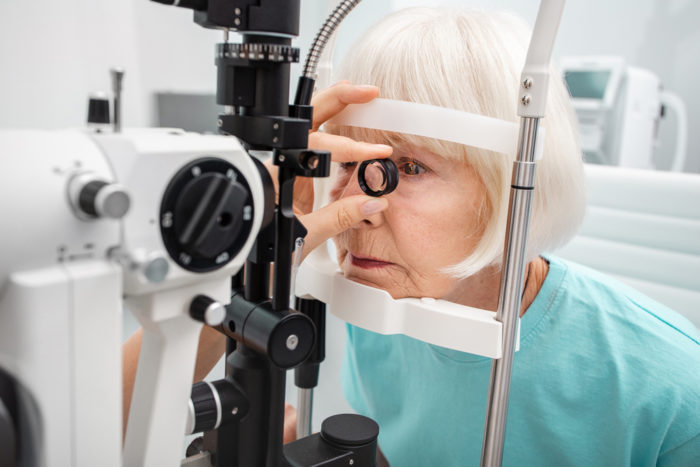
New study reveals link between Alzheimer’s disease and sight loss
September 20th, 2021A link has been found between proteins associated with Alzheimer’s disease and age-related sight loss. It could result in new treatments for patients with deteriorating vision and mean less testing on animals.
A reduction in cases of Age-Related Macular Degeneration
Southampton University revealed the study which if the new findings are correct it could mean a reduction in one of the most common causes of blindness, Age-Related Macular Degeneration (AMD). The link comes from the protein Amyloid beta (AB), the primary driver of Alzheimer’s disease. As people age, AB collects in the retina around a cell layer called retinal pigment epithelium (RPE). Donor eyes from patients who suffered from AMD show high levels of AB in their retinas.
The use of animals in experiments could be significantly less
The research team led by Dr Arjuna Ratnayaka exposed RPE cells of normal mouse eyes to AB. They observed the effect the protein has in living eye tissue by using non-invasive imaging techniques that are used in ophthalmology clinics.
Dr Arjuna Ratnayaka said, “This was an important study which also showed that mouse numbers used for experiments of this kind can be reduced in the future. We were able to develop a robust model to study AMD-like retinal pathology driven by AB without using transgenic animals, which are often used by researchers in the field. Transgenic or genetically engineered mice can take up to a year and typically longer before AB causes pathology in the retina, which we can achieve within two weeks. This reduces the need to develop more transgenic models and improves animal welfare.”
The team used the cell models, which reduced the use of mice in these experiments, to show that the toxic AB proteins entered RPE cells and rapidly collected in lysosomes, the waste disposal system for the cells. Whilst the cells performed their usual function of increasing enzymes within lysosomes to break down this unwanted cargo, the study found that around 85% of AB remained within lysosomes, meaning that eventually, the toxic molecules would continue to accumulate inside RPE cells. They found once lysosomes had been invaded by AB, around 20% fewer lysosomes were available to break down photoreceptor outer segments, a role they routinely perform daily.
A strong link between diseases of the eye and neurological conditions
Dr Ratnayaka added, “This is a further indication of how cells in the eye can deteriorate over time because of these toxic molecules collecting inside RPE cells. This could be a new pathway that no one has explored before. Our discoveries have also strengthened the link between diseases of the eye and the brain. The eye is part of the brain and we have shown how AB which is known to drive major neurological conditions such as Alzheimer’s disease can also cause significant damage to cells in the retina.”
Approved anti-amyloid beta drugs, previously trialled in Alzheimer’s patients could be re-purposed and trialled as a possible treatment for AMD.
Products worth a mention:
Can-C™ (N-Acetylcarnosine eye-drops)– World’s first and original eye-drop to normalise cataract impairment. Normalise Cataract Impairment, Without Surgery.
Users and Scientists have reported that Can-C is also great for:
- Dry eye syndrome
- Contact lens lubricant
- Corneal disorders
- Computer vision syndrome
- Eye strain
- Ocular inflammation
- Blurred vision
- Presbyopia
- Retinal diseases
- Vitreous opacities and lesions
- Complications of diabetes mellitus and other systemic diseases
- Open-angle primary glaucoma.
More information about Can-C™ (N-Acetylcarnosine eye-drops) available: https://www.antiaging-systems.com/products/can-c-n-acetylcarnosine-eye-drops/
Further Reading:
https://www.sciencedaily.com/releases/2021/03/210310122439.htm









